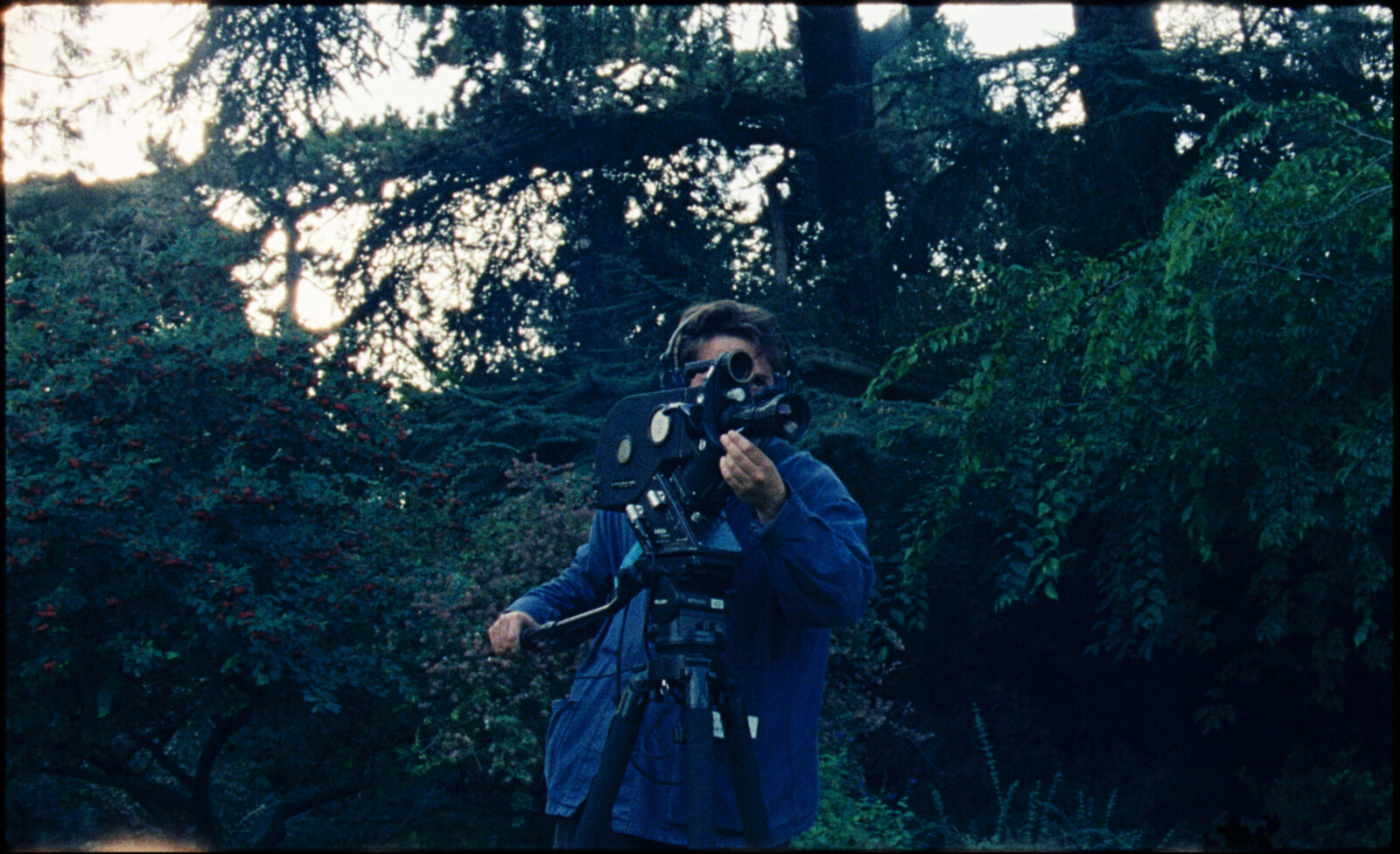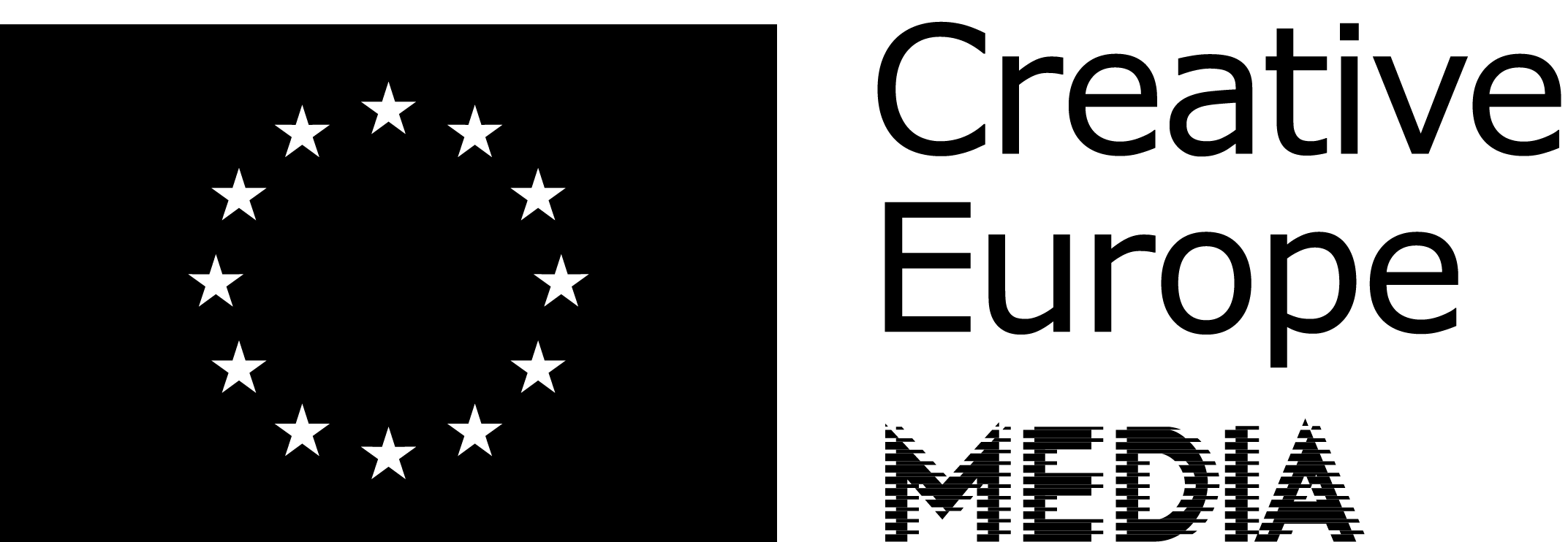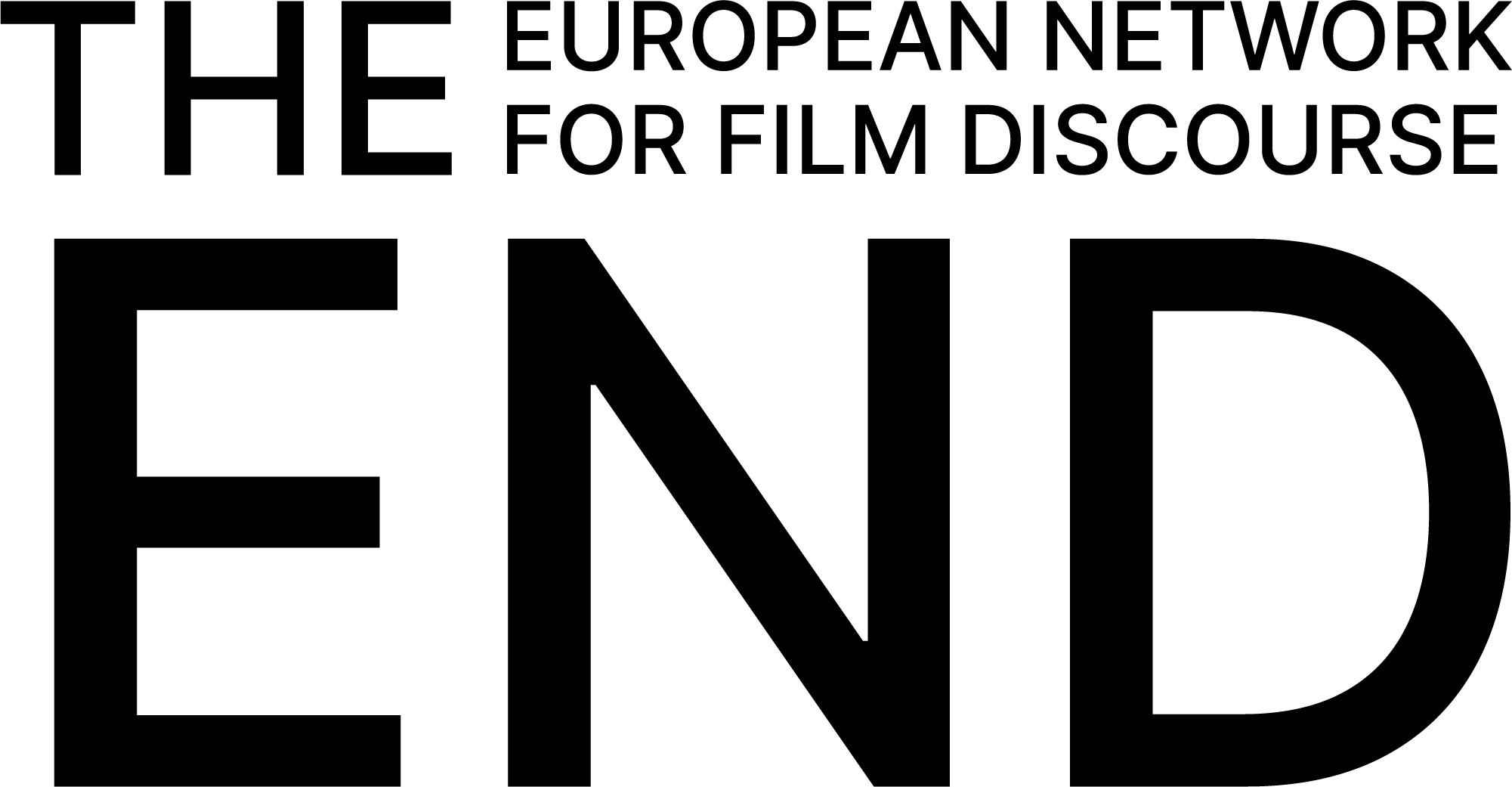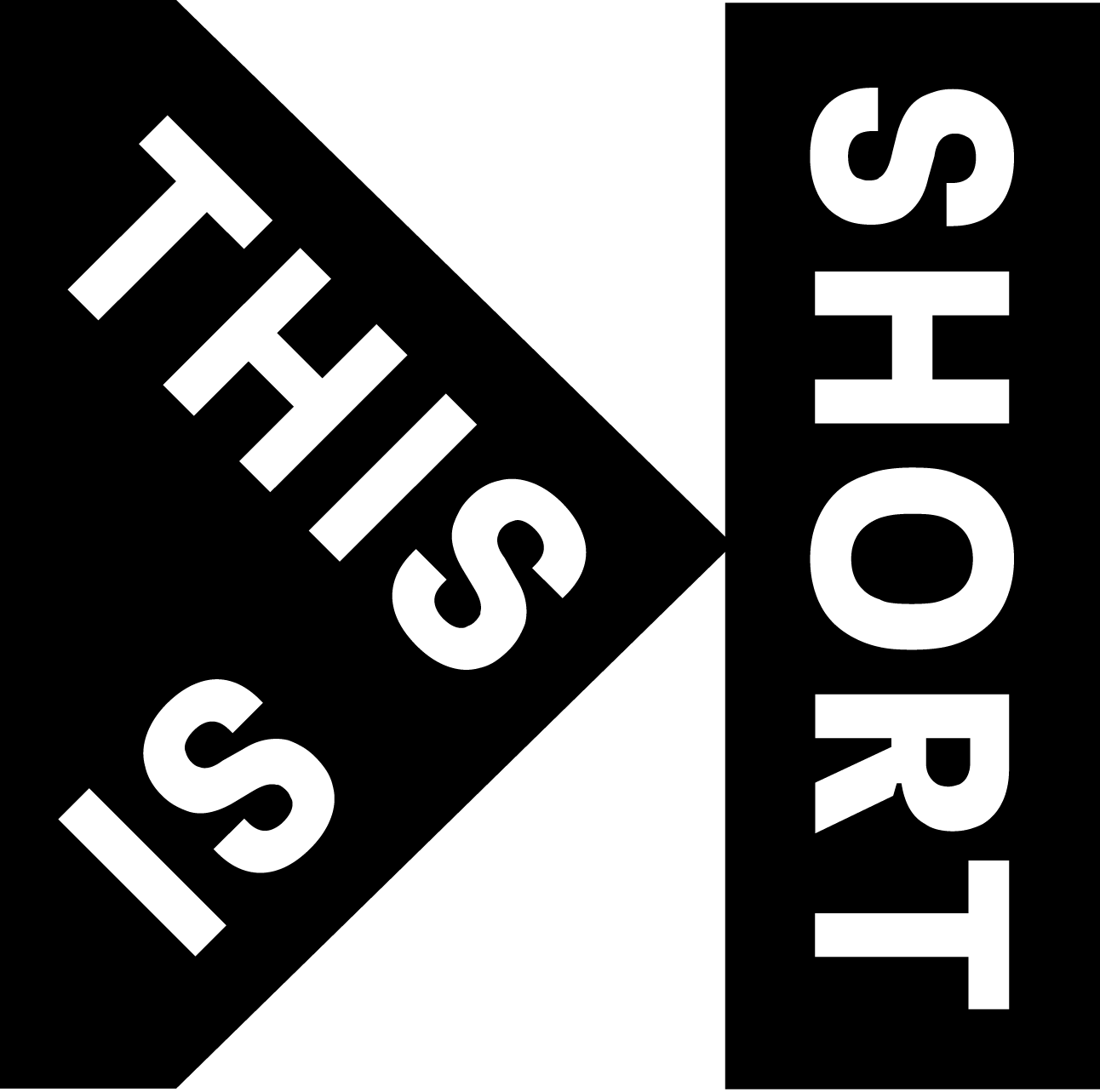A Day of Magical Thinking
Guil Sela on Montsouris Park
If anything terrible happens, best to laugh it off. French filmmaker Guil Sela knows it best, as he has experienced it firsthand in Montsouris Park, now nominated for the New Critics & New Audience Award 2025.

Guil Sela’s latest short, which premiered last year in Cannes as a part of Critics’ Week, is all about finding joy even when the world is on the verge of ending. Montsouris Park follows two filmmakers (played by Guil Sela and Lucas Doméjean) on the lookout for interesting people in the eponymous park in Paris. Discouraged by a lack of inspiring material, they soon witness (through the camera and boom mic) a robbery in broad daylight. It’s a situation either comic or tragic, depending on how you look at it. The outcome of this unexpected encounter will surprise everyone: the filmmakers, the victims, and us, the audience.
Montsouris Park begins with a dedication to Jacques Apelbaum, the director’s beloved grandfather, who kept a ‘coincidence journal’. Sela describes him as “an important figure in our family, always in a fine mood no matter the circumstances. Every day, he observed and appreciated whatever was happening around him. If he took a bus and the driver was good, he would send a letter to the company to say he was excellent.” It was Jacques’ dedication to seeing the good in life that marked the development of Montsouris Park from the beginning. “Since I started working on my film, I knew I wanted to explore the nuance of life, just like he used to do,” Sela adds. He also admits he focused on the poetry of ordinary life because he felt he owed it to his ancestors to tell a story like this. “All of my grandparents survived the Second World War so that the next generations could have a peaceful future. Therefore, I decided to explore what it means to live a ‘normal life.’” In this sense, the director would like to dedicate his short not only to Jacques but also to all people like him.
To paraphrase Joan Didion, Sela depicts a day of magical thinking. When Jacques (another homage!), the camera operator, and Nathan, the boom operator, enter the park, they’re not there to admire Mother Nature. They are hunting for coincidences, just like Mr. Apelbaum used to do. The film’s plot comes from stringing together different real-life anecdotes. “Once, we got robbed in our apartment in Naples. A burglar stole my camera, and when we saw him in our flat, we tried to run after him, but he was faster,” Sela recounts. After the accident, the two Italian policemen who came to the scene reminded Sela of cartoon characters in the spirit of Flip and Flap. When they were writing down the crime report, a phone rang with the main theme from Game of Thrones. “I started laughing, and my friend was bemused by my reaction. After all, someone just stole my camera!” Sela had surrendered to the comic potential of the situation and, for a second, forgot about the stolen equipment. Theft in Naples inspired him to write an ending that was more optimistic than the one he had originally planned. As a result, the short implies that even though we won’t escape some situations (unlike the thief!), we can learn how to live with them.
Where we all can escape, though, is Parc Montsouris, in the 14th arrondissement of Paris—the third protagonist of Sela’s short. Choosing it for the film seemed like a no-brainer for the director. “Parks are the only places where real life can still occur. We can spot a lot of interactions between people and, in a city as dense as Paris, Montsouris gives us some necessary space. I could pan my camera in many directions without any difficulties.” Every time the camera zooms in on another passerby, the background of the frame is packed with images of the park’s greenery, massive trees, healthy grass, and crystal-clear lakes. Admitting he was inspired by a picture American photographer Joel Meyerowitz took in that very park, Sela also centred his attention on all those stoic ducks; tiny creatures just living and letting live the other park visitors. And he also decided to go with a continuous shot to make the short even more observational. However, Sela had to spend some time there, to learn Montsouris by heart and understand its flow. “There is one more reason why I chose Montsouris Park,” he adds. “This is the same place where Agnès Varda shot Cléo from 5 to 7 in 1962.”
In the beginning, we learn that we are watching the park from the camera’s POV. Both filmmakers set themselves on one of the park’s hillocks to establish a distance between the equipment and the people they are trying to record. Jack and Nathan are constantly zooming in on the individuals’ faces, bringing humour into the act of voyeurism. At some point, they spot a woman wearing a black jacket and a red scarf, but they are not interested in “following her around.” Yet, the audience is intrigued, primarily because of this memorable scarf. It’s a tiny detail, unimportant at first sight, but it holds our attention to her. It feels like the colour red builds a contrast with the palette of various types of green. “We chose red because it visually differed from her outfit and made her special. Besides, we were thinking about what she is supposed to wear, so her social background (and thus, her role in the film) won’t be that obvious and cliché,” explains the director.
The anonymous girl is played by Raïka Hazanavicius. She’s more of a chameleon than an actual actress, as she plays with the viewer’s expectations. The reason for casting her lies in a linguistic nuance that creeps in and is harder to read for foreigners. “Raïka has such a French accent that you cannot discern her social background and provenance. Her character remains a mystery till the end.” Hazanavicius’ heroine is constantly on the move, on the edge like a cat on a thin roof. In the park, she is looking for someone (the bald man sitting on a bench beside her?) or something (his mobile phone?). We have a feeling she will return. But what we do not know is the exact role.
The quest for an ideal footage continues. Two minutes later, we can also spot another woman, this time wearing a red sweater. At this point, we notice Sela’s style is based on calculation, so there are no coincidences. Instead of thinking if he intentionally decided to leave her in a frame for the next few seconds, we ask ourselves “why” he did that. In Montsouris Park, red becomes a sign of vitality, a symbol of human life entering the tranquil park, one not yet trespassed by humankind. The tender colour perhaps has the same function as in Albert Lamorisse’s The Red Balloon (1956)—bringing more energy into the already awakened surroundings. Or am I simply relating two French filmmakers? The audience can only speculate, as Sela is an artist unwilling to reveal all the aces up his directorial sleeve.
While watching Montsouris Park through the camera’s lenses, the viewer becomes a voyeur, almost an intruder ruining the park’s arcadia. Sela, who simultaneously acts as the main director in the film, is like a Peeping Tom trying to invade people’s privacy. As a photographer in real life, Sela admits he knows the danger of using accidental bystanders as his models. “Most of the people in the film are non-actors and strangers. I often wonder whether it is ethical to take pictures outdoors,” he admits. “People are reluctant to agree; they’re mostly scared, as they always imagine the worst. Sometimes, if someone seems upset, I speak to them and ask for their permission.” Working on a short film feels safer for Sela, as zooming in from a distance saves everyone from close encounters with other people. At least Sela won’t finish like NYC’s Bruce Gilden, with a few bruises on his face.
In shooting a multilayered film like Montsouris Park, there is a fine line between acting and non-acting. For example, when a person’s eyes meet the camera’s gaze, the entire dynamics change as the subject becomes self-aware. Are they actors at this point or not yet? Eventually, we realise some people captured in the film are somehow wearing certain acting masks. As Sela told us, they already know about the camera’s presence. These are Sela’s friends and relatives, asked to participate in the film to play “themselves.” While watching Sela’s documentary-like filmmaking, the Shakespearean idea that “all the world’s a stage” comes to mind. To some extent, Montsouris Park is like an open theatre. All those people Sela captures are Hamlets, Macbeths, Othellos, and many others.
The girl with a red scarf returns, and we finally learn the truth: she’s also an actress, pretending to be a well-meaning brunette who supposedly wants to ‘try’ the hoverboard belonging to two young friends. When she steals it, our filmmakers do not react at any point. While excited about finding something stimulating, they continue recording those unfortunate robbery victims. One of the protagonists states they were only shooting. The other argues they should intervene, as they already have a recording. This is when Sela strikes again and asks: Is it the responsibility of the filmmakers to act and react? Or should they just watch and not interfere? “I’m not here to answer those questions. The audience should do it on their own.”
Sela’s approach proves films are always about the people who make them. They are the ones who put their souls into them, like those two fellows in Montsouris Park. It’s just the magic of cinema—even such an “objective” tool as a camera becomes a powerful instrument in the hands of a skilled director. Such a device is always ready to play with the image—here, this serene vista of Parc Montsouris—to tell a story within a story.
Montsouris Park was nominated for the New Critics & New Audiences Award 2025 at Vilnius Short Film Festival by Khushi Jain, Rafael Fonseca, Tianyu Jiang, Lina Heimann, Ilo Tuule Rajand, and Klara Jovanov, the participants of the European Workshop for Film Criticism #6.
The New Critics & New Audiences Award is a project by the European Network for Film Discourse (The END), hosted by Talking Shorts, and funded by the Creative Europe MEDIA Programme. With the support of This Is Short.




